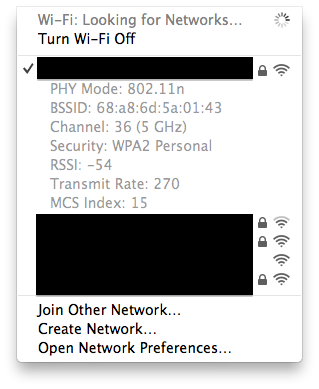Freebox Wifi 20mhz 40mhz


I have two AC1900 routers that I plan to use to cover my whole house and outside yard. I want these set to be optimal to my performance and not my neighbors'. One router is a Netgear Nighthawk R7000 and the other is an ASUS RT AC68U (T-Mobile branded). General questions: 1.
Pourquoi ma largeur de bande passante est brid? Wireless Basics 5 Ways To Fix Slow 802.11n Speed Details Published: Wednesday, 10 December 2008 14:41 Written by Tim.
Dec 31, 2012. My Freebox in in one corner of the apartment & I have an old WRT with the same SID/password in the opposite corner where multiple walls & neighboring wifi APs render the freebox wifi unusable. I can thus pass off from the freebox & the WRT transparently but that doesn't change the high noise floor. Georgia Drivers License Test In Chinese. Windows XP: Manually enabling or disabling your adapter's WiFi connection. (advanced users). To 144.44Mbits/s for 20MHz and from 15 to 300Mbits/s for 40MHz. DSSS/CCK frequency range and. ADSL Ethernet modem, cable modem, Internet “Box” (Livebox®, Freebox®, Neufbox®) 1.4. Box contents. Openbox Skybox Wifi Dongle USB Antenna For F3 F3s F5 F5s V8 V8s V8se zgemma vu solo MAG 250 IPTV. Birmingham City Centre, West Midlands. Features: 802.11b: 1, 2, 5.5, 11Mbps 802.11g: 6, 9, 12, 18, 24, 36, 48, 54Mbps 802.11n:(20MHz) MCS0-7, Support up to 72Mbps (40MHz) MCS0-7, Support up to.
I set the 2.4GHz SSID the same on both routers and the 5GHz SSIDs the same. The 2.4GHz and 5GHz SSIDs are different. Should I make them the same? I just want seamless connectivity when walking around outside. Since these aren't pro grade wireless routers/APs, will I get seamless connectivity going from 2.4GHz on one router to 2.4GHz on the other?
Example, let's say 2.4GHz SSID on both are set to 'dog' and 5GHz is set to 'cat' on both. Would going from dog to dog create a connection drop? What about cat to dog? I want to take advantage of the wifi calling, but it will drop if there's a drop in the wifi. An interesting note, if the phone is connected to the Asus wireless router, Tmobile must have some software installed to make it slow the connection down. A ping to my phone from any computer on the LAN shows a 1ms ping time if connected to the Netgear. When it's connected to the Asus, the ping time is the same to T-Mobile's server (ipconfig confirms it's their server).
If I use high intensive bandwidth applications (ie. A speed test), it goes from routing through T-Mobile's servers (50ms+ ping time) back to my LAN (1ms ping time). Any way to make it not do that?
I'm guessing it does that for the wifi calling to give it high priority QoS. Looks like I'd need Asuswrt-merlin?
5GHz questions: 1. The AC band is set to channel 149 on the one and 157 on the other. How far apart must they be to not interfere? Should I set it to 20/40/80 MHz or 80MHz? Why doesn't any band above 157 work? My laptop doesn't even see it.
If I set it back to 157, it works fine. One router goes up to 161, and the other router goes up to 165.
161 and 165 do not work. If I select lower channels (ie.
36 to 48), will I get 802.11a speeds, rather than 802.11ac? 2.4GHz questions: 1. I set both routers to 40MHz so it uses the dual channels.
One is set to channel 1 primary channel and the second router is set to channel 11 primary channel. I know these won't interfere (1, 6, 11 will not), but how does that work with the secondary channel? Error Loading Drivers Macbook Air more. Will those interfere?
My guess is no for 802.11n, since 1/5 is used on the one router and I'm guessing 11/7 are used on the other. But then 5/7 would interfere, so I don't know what to do! The one router shows the following: 2.4GHz channels: 1(P)+5(S) 5GHz channels: 149 + 153 + 157(P) + 161 To enable the second channel, I had to uncheck 'Enable 20/40 MHz Coexistence'.
The second router has the option to select 20/40 or 40 MHz (2.4GHz) and 20/40/80 or 80 MHz (5GHz) which I am guessing accomplishes the same thing. The second router is set to channel 11 and 149 for 2.4GHz and 5GHz, respectively. I'd set 2.4 GHz and 5 GHz to different names. This ensures that you know which devices are connected to which bands.
For devices that are mostly mobile and benefit from extended range, connect to 2.4 unless the performance is so poor that you must use 5. 5 GHz channels that you can select don't overlap. If you use 40 MHz, skip a channel. For example, I have three APs: AP 1 on 157/161, AP2 on 149/151, and AP 3 on 44/48.
149 and 157 should not interfere unless 157 is using 151 as the extension channel. Look for 'Upper' or 'Lower' in the settings and be sure the Extension or Wide channel is set to Upper. Verify with inSSIDer or similar for the 157+161 designation.
Note: If you choose 80 MHz, go for the opposite side of the band. For example, if your 80 MHz AP is on any of the 2-digit channels, use the 3-digits for the other AP, unless you can get channels 161 and 165 working in 40 MHz mode (or at all, never heard of that problem - my devices all see 165 fine).